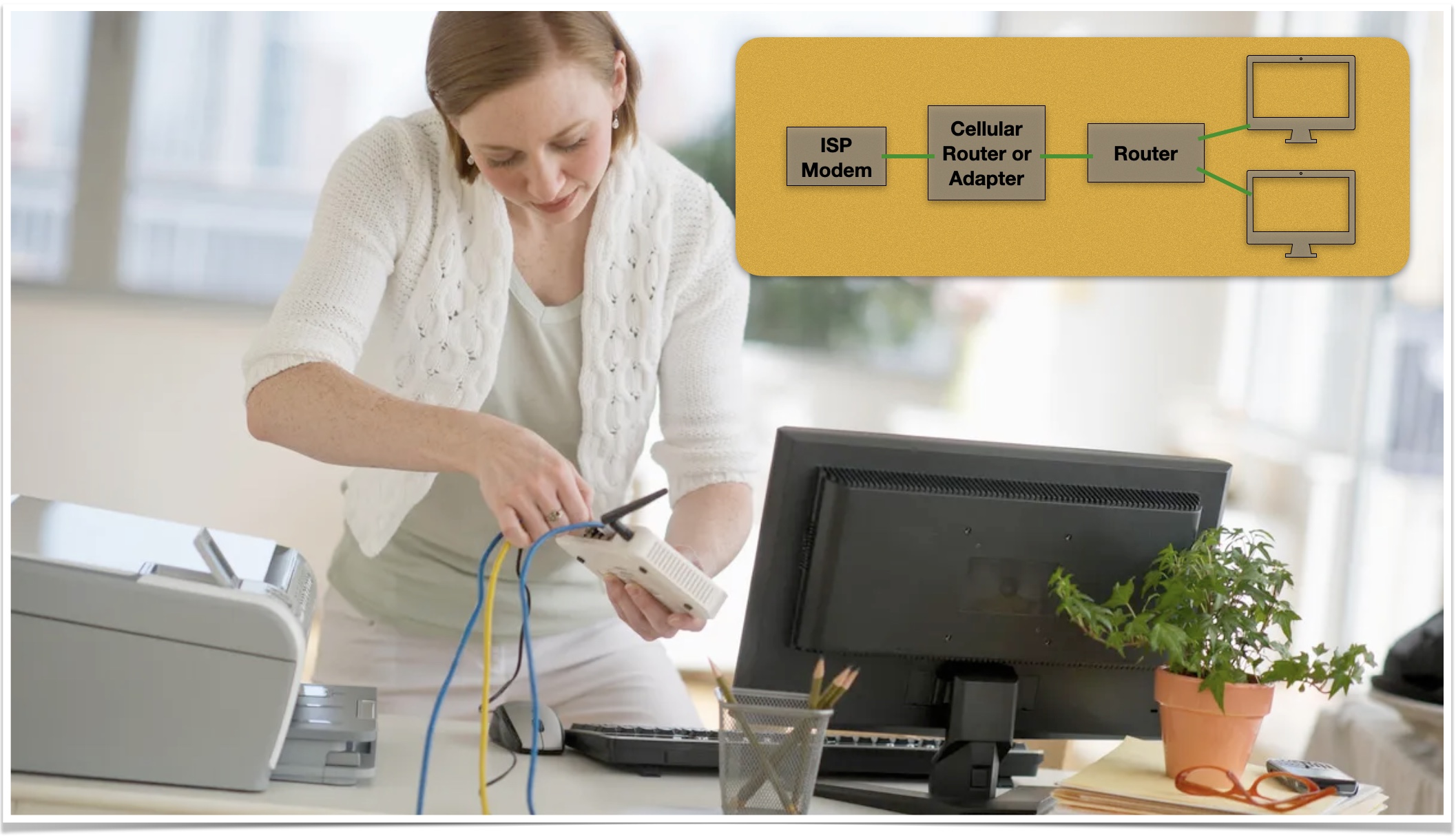
We all know how crucial a reliable internet connection is for both personal and business operations. However, even the most dependable internet service providers can experience outages or downtime. To ensure uninterrupted connectivity, it’s essential to have a failover solution in place. One effective way to achieve this is by incorporating a cellular router or adapter into your existing network.
The Need for Failover Solutions
Downtime caused by internet service interruptions can have significant consequences. For businesses, it can lead to lost revenue, productivity, and damage to reputation. For individuals, it can disrupt essential online activities like remote work, streaming, and communication. This is where automatic failover solutions come into play.
A cellular router or adapter acts as a backup internet connection when your primary service fails. It seamlessly switches over to cellular data, ensuring continuous connectivity even during ISP outages. Setting up this failover mechanism is relatively straightforward and can save you from the hassle and losses associated with downtime.
Topology: How Cellular Routers Fit into Your Network
To incorporate a cellular router or adapter into your existing network, you need to understand the network topology. Here’s a step-by-step guide:
- Evaluate Your Network Setup: Before you begin, assess your current network configuration. Identify the primary modem and router (or combination modem/ router unit) that connects your network to the internet and locate the devices that require internet access.
- Select the Cellular Router or Adapter: Choose a cellular router or adapter that suits your needs. Do you have a separate modem and router in place or has your Internet Service Provider (ISP) supplied you with a combination modem/ router unit? If you have a separate modem and router, you can simply select a cellular adapter. If using a combination modem/ router, look at cellular routers instead. In this case, you would configure your modem/ router unit in a bridge or passthrough mode and then connect it to the WAN port of the cellular router. In either case, ensure the cellular router or adapter supports automatic failover and is compatible with your cellular provider.
- Position and Install the Cellular Router: If using a cellular adapter, place this between your ISP’s modem and your router. The modem’s Ethernet cable should plug into the WAN port of the adapter. Then, from the LAN port on the adapter, connect it to the WAN port of your router. When you have a combination modem/ router, take an Ethernet cable from a LAN port and plug it into the WAN port of the cellular router. Place the cellular router or adapter in a strategic location where it can receive a strong cellular signal. This may require an external antenna to be installed if the signal inside is not usable.
- Configure the Cellular Router or Adapter: Access the router’s web-based configuration interface using a computer connected to the router. Typically, you can do this by entering the router’s IP address in a web browser. Follow the manufacturer’s instructions to set up the cellular connection. In a lot of cases, this may be a plug and play setup!
- Confirm Failover is Enabled: Most failover capable routers will have this feature enabled by default. In other cases, you may need to enable it and/or prioritize your Internet connections. The router will likely include some sort of connection health monitor as well. This setting determines when the router should switch to the cellular connection and back to the primary connection. It simply verifies that the connection is online or offline multiple times before it triggers the failover or failback [to the primary Internet connection].
- Test and Monitor: After configuring the cellular router, thoroughly test the failover mechanism to ensure it works as expected. Also, set up monitoring and alerts to be notified of any failover events. This way, you can take action or troubleshoot issues promptly.
Benefits of Cellular Failover
Incorporating a cellular router or adapter into your network can be quite simple with features like drop-in mode or IP Passthrough mode. These are features that allow you to utilize the settings of the failover router or adapter, while seamlessly incorporating it into your existing network. It also offers several other advantages:
- Seamless Connectivity: The failover process is automatic and swift, ensuring minimal disruption to your online activities or business operations.
- Reliability: Cellular networks are independent of your ISP, reducing the risk of simultaneous failures. This redundancy improves overall network reliability.
- Remote Access: Cellular routers are invaluable for remote locations or areas with unreliable wired internet connections. They provide a dependable connection for monitoring and managing remote devices.
- Business Continuity: For businesses, uninterrupted internet access is critical for customer service, financial transactions, and data backup. Cellular failover ensures business continuity even during network outages.
Putting a cellular router or adapter in place for automatic failover is a smart investment in ensuring uninterrupted connectivity. By understanding your network topology and following the steps outlined in this article, you can enhance your network’s reliability and minimize the impact of internet service disruptions. Whether for personal use or business continuity, cellular failover solutions are a valuable addition to any network.
Do you still have questions? Let the 5Gstore team help you with your setup! We’ll guide you through the pre-sales process to determine the best solution and then assist you with the configuration once the product is received. We’re here with you through the whole process!


